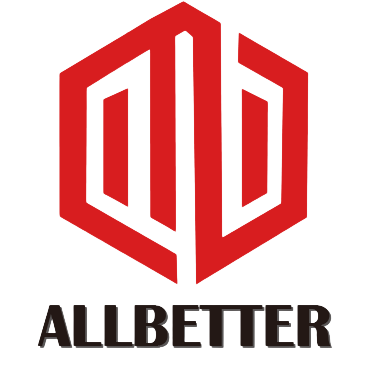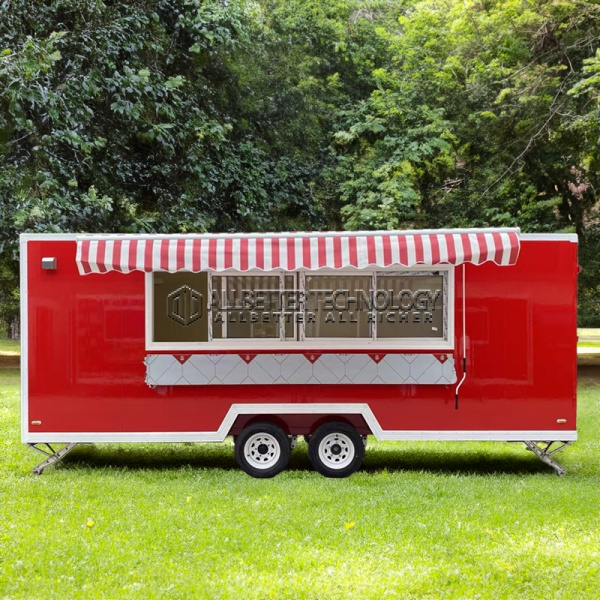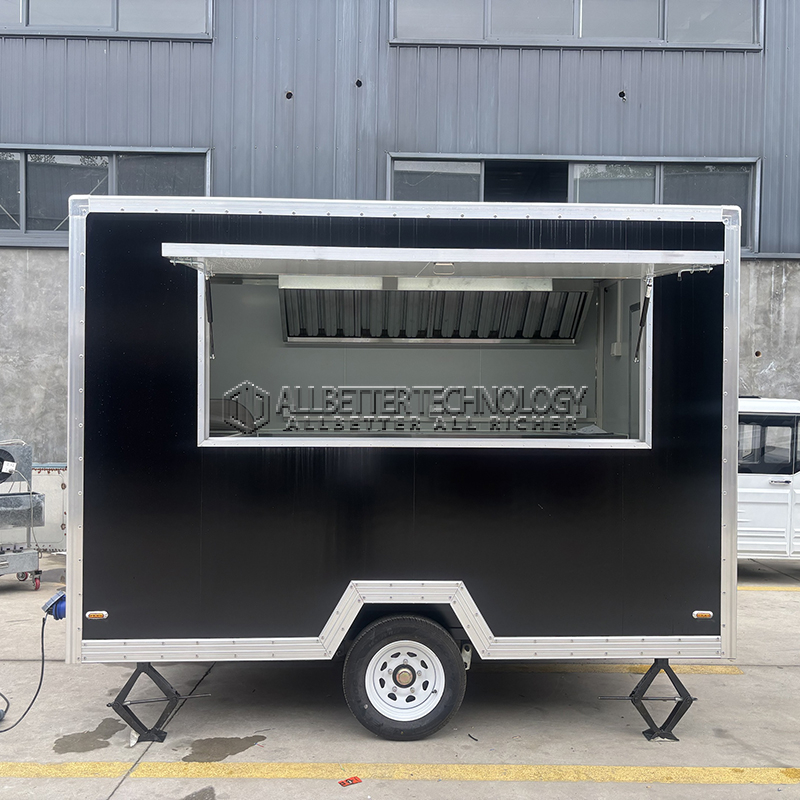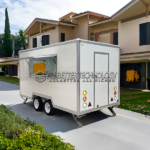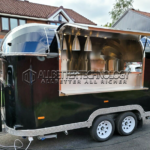The eggroll food trailer is more than just a mobile kitchen; it’s a meticulously engineered “food-making machine.” Its streamlined or egg-shaped design, accented by eye-catching branding and lighting, creates a striking visual presence on the street. Constructed from high-strength stainless steel or galvanized steel, it ensures durability, ease of cleaning, and complies with international food safety standards. Some high-end models also feature retractable awnings, LED displays, and sound systems, allowing them to quickly become the focal point of an event.

Core Features
1. Flavor Revolution: From Single to Diverse
Traditional egg rolls consist of a flour wrapper wrapped around shredded vegetables and meats, but modern food trucks have transformed them into “flavor experiments.” For example:
- Cross-industry Fusion: Classic dishes like lasagna and burritos are reimagined in egg roll form, such as the “Korean Kimchi Beef Egg Roll” with hot sauce and cheese.
- Seasonal Specials: Offers the Christmas-themed “Honey Maple Fried Chicken Waffle Egg Roll” or the Halloween-themed “Pumpkin and Cheese Lava Egg Roll.”
- Healthy Redesigns: Using whole-wheat dough and plant-based fillings (such as tofu and hummus) appeals to vegetarians and those seeking fitness.
2. Efficient Delivery: Hot Food Delivered in 30 Seconds
Food trucks utilize a “pre-made + freshly fried” model: fillings are pre-prepared in a central kitchen, and only three steps are required on-site: wrapping, frying, and boxing. Each portion is prepared in under 30 seconds. This approach ensures a crispy exterior and juicy filling while significantly improving delivery efficiency, making it suitable for high-volume dining.
3. Flexible Customization: Modular Space Design
The interior of the food truck features adjustable shelves, folding worktops, and built-in appliances, allowing for quick layout adjustments based on menu needs. For example, if the main offering is egg rolls, the fryer can be replaced with a waffle maker or chocolate fountain.
Internal Equipment
- Multifunctional Frying System: A dual-tank electric fryer (adjustable temperature 150-200°C) supports simultaneous frying of different items to prevent odor transfer. Select models are equipped with an automatic oil filter to extend the life of the cooking oil.
- Smart Temperature Control Oven: For baking cheese rolls or desserts, with a temperature accuracy of ±5°C, ensuring even browning.
- Quick Thaw Cabinet: Stores pre-made fillings, adjustable from -18°C to 4°C, and allows for complete defrosting within 2 hours.
- Safe Water System: A dual-tank design (with separate clean and wastewater systems) features a foot-operated handwashing sink and disinfectant dispenser, and is HACCP-compliant.
- Energy Management: Optional solar panels, lithium battery packs, or a dual-fuel (gas/electric) system reduce operating costs.
Application Areas
1. Urban Street Economy
- Stopped at commercial streets, subway stations, or university towns, these trucks attract commuters with a “grab and go” service. For example, a New York food truck, through data analysis, found that “afternoon tea omelets” (served with coffee) account for 40% of sales between 3 and 5 p.m.
2. Event Catering Solutions
- Provide customized services for music festivals, sporting events, weddings, and more. An Australian operator once designed a “mini omelet bar” for a wedding of 5,000 people, serving over 300 omelets per hour.
3. Cross-Brand Collaboration
- Collaborate with breweries and cafes to launch limited-edition products. For example, a California food truck partnered with a craft beer brand to launch “beer-fried omelets,” using beer batter for a crispier texture.
4. Cultural Export Vehicles
- Food trucks manufactured by Chinese manufacturers have been exported to countries like Saudi Arabia and South Africa. By adjusting fillings (such as adding local spices), they have achieved localization, becoming a mobile platform for spreading Chinese culinary culture.

